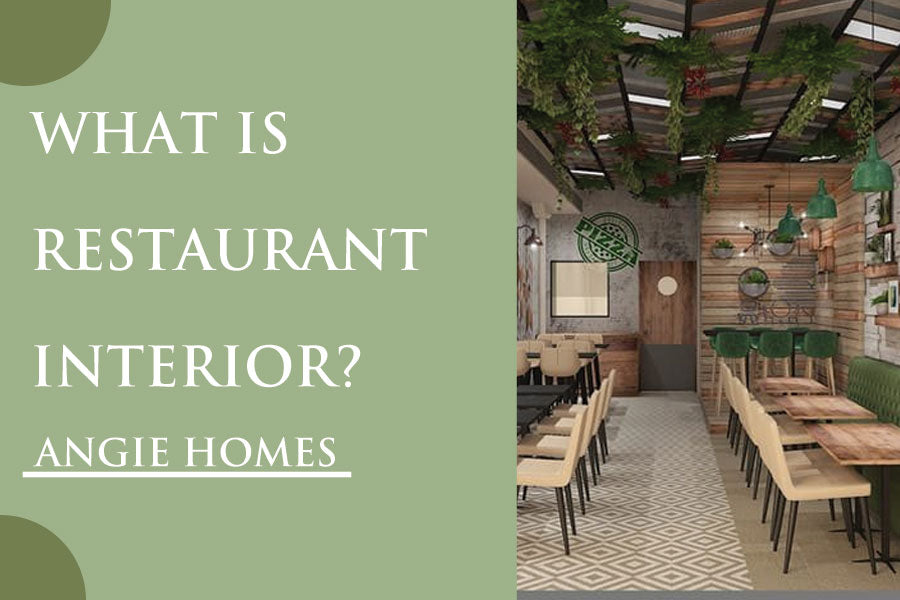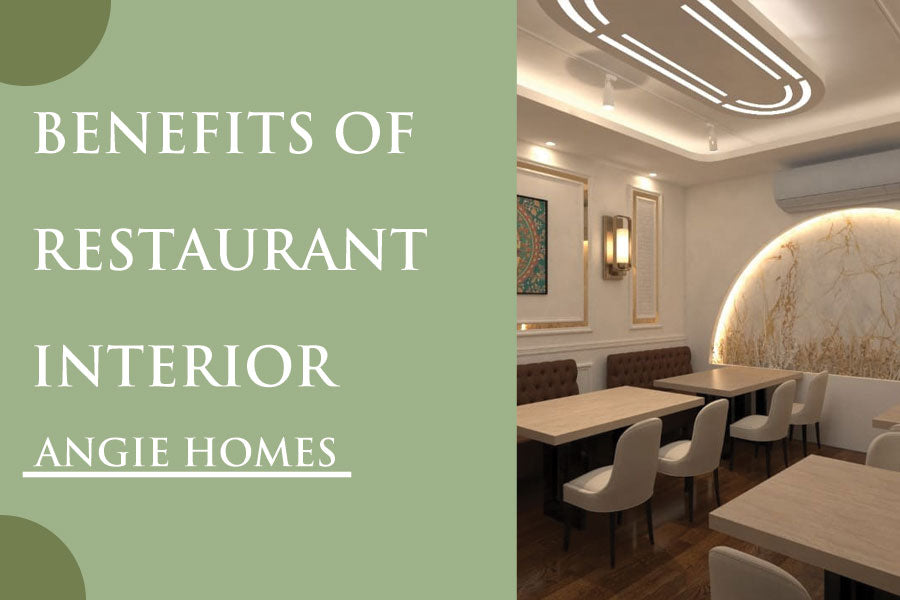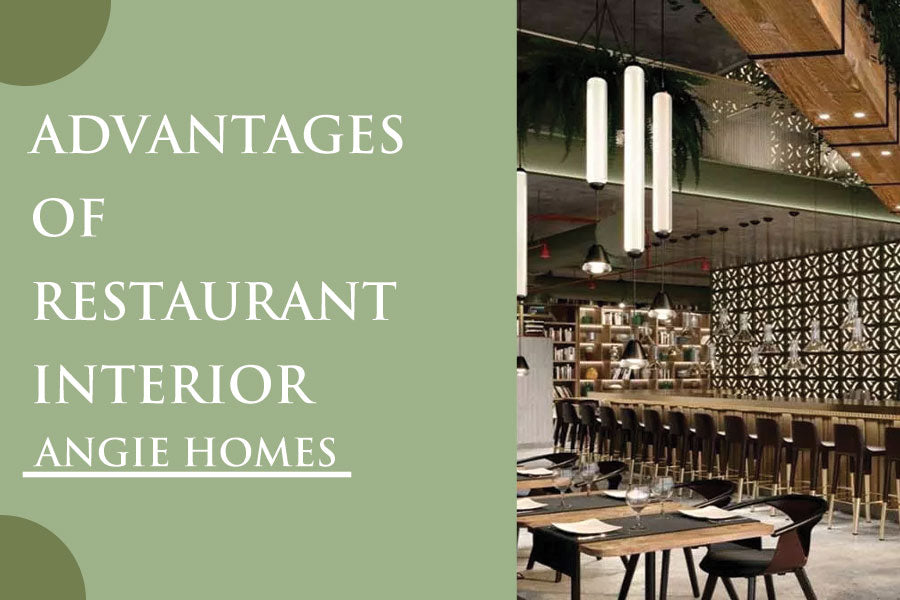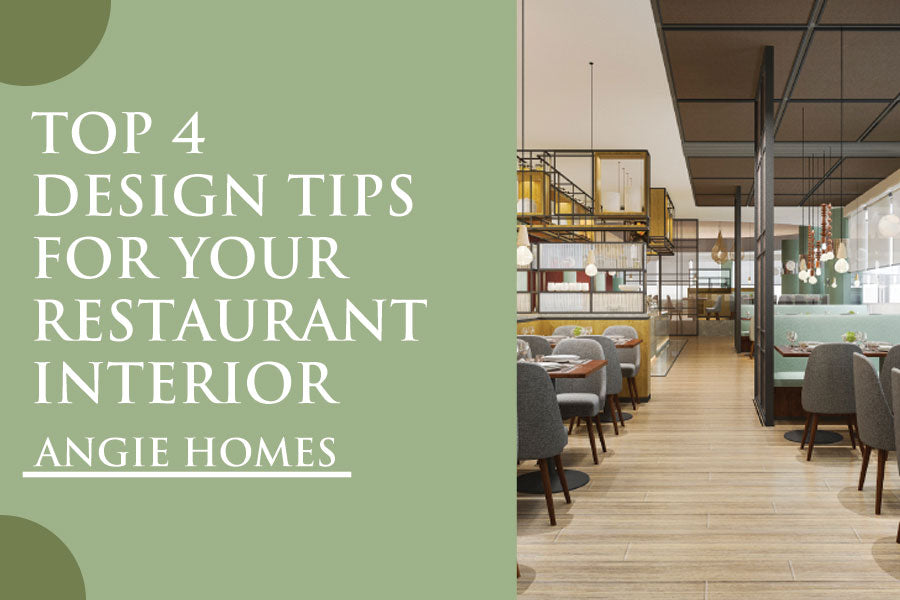Introduction
In the world of hospitality, the success of a restaurant extends far beyond the culinary delights it serves. The ambiance and design of the restaurant interior play a pivotal role in shaping the overall dining experience. Welcome to our comprehensive guide on transforming your restaurant interior into a space that not only captures the essence of your culinary vision but also ensures a memorable and enjoyable atmosphere for your patrons.
What is Restaurant Interior?

Before we delve into the intricacies of designing a captivating restaurant interior, it's essential to understand the concept itself. Restaurant interior design is an artful blend of aesthetics and functionality, a deliberate orchestration of space, color, lighting, and decor to create an environment that resonates with the restaurant's identity and enhances the overall dining experience.
Benefits of Restaurant Interior

Investing in a well-thought-out restaurant interior for your restaurant yields a myriad of benefits that extend beyond mere visual appeal. Let's explore ten compelling reasons why restaurant owners should prioritize the design of their interior spaces.
- Enhanced Customer Experience: A thoughtfully designed restaurant interior contributes to a positive and memorable dining experience, encouraging customers to return.
- Brand Identity: The restaurant interior serves as a canvas to express your restaurant's unique identity, reinforcing brand recognition and loyalty.
- Increased Foot Traffic: An inviting ambiance attracts passersby and encourages them to step inside, contributing to higher foot traffic.
- Competitive Edge: In a saturated market, a well-designed restaurant interior sets your restaurant apart, creating a competitive edge that attracts discerning diners.
- Improved Operational Efficiency: Efficient layout and restaurant interior can streamline staff movements, leading to improved service speed and operational efficiency.
- Positive Staff Morale: A well-designed space isn't just for customers. It can boost staff morale, creating a more enjoyable and productive work environment.
- Flexibility and Adaptability: Thoughtful restaurant interior design allows for flexibility, enabling the space to adapt to different needs, events, or changes in the menu.
- Positive Reviews and Word-of-Mouth: A visually appealing and comfortable restaurant interior often translates into positive reviews and word-of-mouth recommendations.
- Maximized Space Utilization: Strategic design optimizes space, ensuring that every square foot contributes to the overall functionality and aesthetics of the restaurant.
- Increased Profitability: Ultimately, a well-designed restaurant interior contributes to a positive bottom line by attracting and retaining customers, fostering a profitable and sustainable business.
Also Read: Bar Area Interior Solutions: Elevating Spaces with Style and Functionality
Advantages of Restaurant Interior

Building upon the foundation laid by the benefits of restaurant interior design, let's delve into the specific advantages that contribute to the success and longevity of your establishment.
- Customer Retention: A visually appealing and comfortable restaurant interior encourages customers to return, fostering loyalty and ensuring repeat business. Positive first impressions often translate into long-term relationships.
- Atmosphere Tailored to Cuisine: The restaurant interior can be tailored to complement the type of cuisine you offer. Whether it's a cozy ambiance for an intimate dining experience or a vibrant setting for casual fare, the design sets the tone.
- Targeted Demographic Appeal: Thoughtful restaurant interior design allows you to tailor the atmosphere to resonate with your target demographic. Whether it's families, young professionals, or a specific cultural group, the design can cater to their preferences.
- Efficient Space Utilization: Maximizing the utility of your space is crucial, especially in bustling urban environments. A well-designed restaurant interior ensures that every square foot serves a purpose, optimizing seating capacity without compromising comfort.
- Cohesive Branding: The interior serves as a three-dimensional representation of your brand. Consistent branding elements in the decor, color schemes, and overall aesthetic create a cohesive and memorable brand identity.
- Adaptability to Trends: The restaurant industry is dynamic, with trends evolving rapidly. An adaptable restaurant interior design allows you to incorporate new trends seamlessly, ensuring your restaurant remains fresh and relevant.
- Social Media Appeal: In the age of social media, aesthetically pleasing interiors become instant influencers. Patrons love sharing their dining experiences online, turning your restaurant into a visual asset that attracts a broader audience.
- Positive Psychological Impact: Colors, lighting, and overall ambiance have a direct impact on patrons' moods. A well-designed restaurant interior can create a positive psychological atmosphere, contributing to a relaxed and enjoyable dining experience.
- Efficient Workflow: The layout and design of your restaurant interior can significantly impact staff efficiency. Streamlined workflows and ergonomic considerations enhance the overall operational efficiency, translating into smoother service.
- Compliance with Regulations: Depending on your location, there may be specific regulations governing the design and layout of restaurants. Ensuring compliance not only avoids legal issues but also contributes to a safe and comfortable environment for patrons.
Top 4 Design Tips for Your Restaurant Interior

Embarking on the journey of designing or revamping your restaurant interior requires a strategic approach. Here are the top four design tips that will serve as guiding principles for creating an inviting and functional space that captivates your patrons.
Key Considerations
- Traffic Flow: Design pathways that guide patrons naturally through the space, avoiding bottlenecks and congestion during peak hours.
- Zoning: Define distinct zones within your restaurant interior, such as dining areas, bar spaces, and waiting areas. Each zone should have a purpose and contribute to the overall ambiance.
- Staff Movement: Consider the ease with which staff can navigate the space. A well-designed layout facilitates efficient service and minimizes the risk of collisions or delays.
2. Pay Attention to Lighting: The impact of lighting on the overall atmosphere of a restaurant interior cannot be overstated. Proper lighting sets the mood, highlights key design elements, and contributes to the overall visual appeal of the space. A thoughtful lighting scheme involves a combination of natural and artificial lighting that complements the restaurant's theme and enhances the dining experience.
Also Check: Best Bar Designer and Decorator in India
Key Considerations
- Natural Light: Whenever possible, leverage natural light to create a warm and inviting atmosphere. Consider large windows, skylights, or glass doors to maximize the influx of natural light during daylight hours.
- Ambient Lighting: Establish a balance between ambient, task, and accent lighting. Ambient lighting provides overall illumination, while task lighting focuses on specific areas such as tables or the bar. Accent lighting highlights architectural features or artwork of your restaurant interior.
- Dimmer Controls: Install dimmer controls to allow for flexibility in adjusting the intensity of lighting throughout the day. This feature is particularly beneficial during different dining periods, transitioning from bright and vibrant during lunch to more subdued and intimate during dinner.
Key Considerations
- Brand Colors: Incorporate your brand colors into the restaurant interior design to reinforce brand identity. This can be achieved through furniture, decor, or accent walls.
- Cultural Influences: If your restaurant specializes in a particular cuisine or cultural theme, draw inspiration from the associated color palettes. For example, warm earth tones for Mediterranean cuisine or vibrant reds and yellows for Mexican-inspired decor.
- Psychological Impact: Consider the psychological impact of colors. Cool tones like blues and greens can create a calm and relaxing atmosphere for your restaurant interior, while warm tones like reds and oranges can evoke energy and vibrancy.
Key Considerations
- Acoustic Design: Invest in acoustic restaurant interior design elements to minimize noise and create a more comfortable atmosphere. This can include sound-absorbing materials on walls and ceilings, as well as strategic placement of furniture to reduce sound reflections.
- Music Selection: Choose a music playlist that aligns with the restaurant interior theme and target audience. Consider the volume and genre, ensuring it enhances rather than distracts from the dining experience.
- Separate Spaces: If your restaurant interior has multiple zones or rooms, consider implementing sound barriers or acoustic treatments to create distinct spaces with different noise levels. This is particularly relevant for fine dining areas versus more casual spaces.
Conclusion
Designing the restaurant interior of your restaurant is a multifaceted endeavor that requires a thoughtful blend of creativity, functionality, and an understanding of the unique identity your establishment seeks to convey. By carefully planning your layout, paying attention to lighting, using the right colors, and considering sound, you can create an atmosphere that not only reflects your brand but also enhances the overall dining experience for your patrons.
Investing time and effort into these restaurant interior design tips can yield a myriad of benefits, from increased customer satisfaction and loyalty to a competitive edge in the dynamic world of hospitality. Remember, the success of your restaurant interior is not only in the flavors on the plate but also in the carefully curated ambiance that surrounds it. Embrace the art of restaurant interior design, and watch as your space transforms into a haven for unforgettable dining experiences.
As you embark on this design journey, keep the customer at the center of your decisions, ensuring that every element contributes to their comfort, enjoyment, and the creation of lasting memories. Cheers to creating a restaurant interior that not only satisfies the palate but also delights the senses!
Related Posts :
How To Pair Fabric and Wallpaper : A Comprehensive Guide
Walls That Wow: Enhancing Your Decor with Stylish Wall Sconces
Best Fabrics for Walls : Enhancing Interiors with Style and Texture
How to Cover a Wall With Fabric: Transform Your Space with Angie Homes
Transform Your Space with a DIY Fabric Feature Wall: A Comprehensive Guide
Elegant Walls: A Comprehensive Guide to Fabrics For Wall Decor
The Ultimate Guide to Bedroom Walls: Aesthetic, Decor and Harmony
A Complete Guide to Bedroom Wall Design
Kitchen Design Ideas: Things You Need to Consider
Classic Apartments Interior: Timeless Elegance and Comfort
Modern Apartments Interior Solutions: Elevating Contemporary Living
Harmony in Diversity: Unlocking the World of Fusion Apartments Interior Solutions
Bar Area Interior Solutions: Elevating Spaces with Style and Functionality
Mediterranean Bedroom Design Ideas: Bring the Coastal Vibe Home
Designing the Perfect Home Bar: A Blend of Style and Functionality
An Ultimate Guide to Bedroom Designs
Exploring the World of Kids Bedroom Designs: A Comprehensive Guide
FAQ's
Q. Why interior is important in a restaurant?
Ans: Interior design in a restaurant interior is crucial as it shapes the overall dining experience. A well-designed interior enhances the atmosphere, reflects the restaurant's identity, and contributes to customer satisfaction, loyalty, and positive reviews. It creates a comfortable and inviting space that complements the culinary offerings, setting the stage for memorable dining moments.
Q. How do you design a restaurant interior?
Ans: Designing a restaurant interior involves understanding the brand identity, target audience, and cuisine. Careful planning of layout, attention to lighting, selection of appropriate colors, and consideration of sound are key. Collaboration with architects and designers, keeping functionality in mind, and staying updated on industry trends contribute to a successful design.
Q. What is a restaurant design?
Ans: Restaurant design encompasses the deliberate planning and arrangement of physical elements within a dining establishment to create a cohesive and aesthetically pleasing environment. It involves the selection of furniture, lighting, colors, and decor that align with the restaurant's theme, cuisine, and brand identity. The goal is to enhance the overall dining experience and contribute to the establishment's success.
Q. What is important in interior?
Ans: Important aspects in restaurant interior design include functionality, aesthetic appeal, and a harmonious blend of elements that contribute to the desired atmosphere. Attention to layout, lighting, color schemes, and sound considerations are critical. Balancing these factors ensures that the interior not only looks visually appealing but also serves its purpose, creating a space that aligns with the intended use and user experience.
Q. Why is interior important?
Ans: Interior design is vital as it significantly influences the mood, perception, and functionality of a space. In various settings, such as homes, offices, and especially in restaurants, a well-designed interior contributes to comfort, efficiency, and a positive atmosphere. It reflects the identity of the space, affecting the experiences of occupants or patrons. In a restaurant context, the interior is particularly important as it complements the culinary offerings, influencing customer satisfaction, repeat business, and overall success in a competitive industry.
